
14
Operator Assistance and
Manual Services zyxwvutsrqponmlkjihgfedcbaZYXWVUTSRQPONMLKJIHGFEDCBA
Early telephone networks
were
all
manually operated.
In
the 1950s
automatic
networks
began
to
take over, but even
today
they
have failed
to
supplant
all
manual ‘assistance
services’.
In
the
public network human operators provide
a
‘safety
net’
of
assistance
and
advice
for customers,
and
in
some private networks human zyxwvutsrqponmlkjihgfedcbaZYXWVUTSRQPONMLKJIHGFEDCBA
PBX
operators are
still
employed
to
answer
incoming
calls
from
the
public network and
to
connect
them
to
the
required extension. In this chapter
we
discuss
the
operator assistance
services
which
form a
critical
supplement
to
automatic switched services
in
meeting
the
high expectations of today’s telephone customer.
14.1
MANUAL NETWORK OPERATION
In a manual network, the connection of caller to destination is carried out by human
operator. This is done by zyxwvutsrqponmlkjihgfedcbaZYXWVUTSRQPONMLKJIHGFEDCBA
plugging
cords into individual line sockets or
jacks,
one
jack
corresponding to each possible destination user. Figure 14.1 illustrates an early manual
switchboard, and Figure 14.2 a typical telephone used on such a manual network.
Instead of a numbered
dial
there is just a cradle for the handset and a magneto
generator to call the operator.
The routine for making a call on a manual network is as follows. The caller lifts the
handset, and rings the magneto generator by turning the handle. This has the effect of
alerting the operator and lighting an
opal
(a light) on the operator’s switchboard
(Figure 14.1).
In
some cases, the operator was alerted merely by rattling the cradle. This
had the effect
of
flashing the opal. There is an opal above each incoming line jack,
indicating precisely which caller wishes to make a call. To answer the request, the
operator uses one
of
the cords mounted on the console part of the switchboard, which is
pulled out and plugged into the relevant
jack
socket immediately below the
opal.
The
operator is now able to speak
to
the caller and ask for the name
of
the person he wishes
to call. The operator records the caller’s name, the destination number and the time of
day, on
a
ticket
for later
billing
of the caller. The destination party is then alerted by the
operator, who rings his telephone with another hand-cranked generator. The connection
281
Networks and Telecommunications: Design and Operation, Second Edition.
Martin P. Clark
Copyright © 1991, 1997 John Wiley & Sons Ltd
ISBNs: 0-471-97346-7 (Hardback); 0-470-84158-3 (Electronic)

282
OPERATOR ASSISTANCE AND MANUAL SERVICES zyxwvutsrqponmlkjihgfedcbaZYXWVUTSRQPONMLKJIHGFEDCBA
Opals
and zyxwvutsrqponmlkjihgfedcbaZYXWVUTSRQPONMLKJIHGFEDCBA
z=$&.$
Destination zyxwvutsrqponmlkjihgfedcbaZYXWVUTSRQPONMLKJIHGFEDCBA
0
Caller Operator
Schematic zyxwvutsrqponmlkjihgfedcbaZYXWVUTSRQPONMLKJIHGFEDCBA
l
I
/‘
Generator signalling
crank
Actual
Figure
14.1 zyxwvutsrqponmlkjihgfedcbaZYXWVUTSRQPONMLKJIHGFEDCBA
Early manual,
or
‘sleeve control’ switchboard
is completed by plugging the other end of the cord into the zyxwvutsrqponmlkjihgfedcbaZYXWVUTSRQPONMLKJIHGFEDCBA
jack
of the destination party.
In this way the pair of plugs and the cord connect the two corresponding line
jacks
to
caller and destination. At the end of the call the caller replaces the handset, extinguishing
the
opal.
On noticing this, the operator removes the plugs and cord from the jacks, ready
for use on another call.
To
make calls to customers on other exchanges the operator has a number
of
trunk
line jacks.
To
use them, the operator must relay the call details to the operator on the
second exchange, and forward the connection. The second operator either completes
the call or forwards it to another operator, as necessary. In manual networks, setting up
telephone calls is highly labour-intensive, and in the early days the majority of the
workforce in public telephone companies were
telephone operators.
14.2
SEMI-AUTOMATIC TELEPHONY
Semi-automatic telephony
is the term used to describe connections which are set up by an
operator across an
automatic network.
Semi-automatic telephony was common when
telephone networks were first being automated, especially when some exchanges had
been automated while others remained manual. Callers on the manual exchange, who
wished to call others already connected to an automatic exchange, would have their calls
connected
semi-automatically
by the operator. The caller would first contact the
operator, and the operator would then connect the call onward using special equipment
to control the automatic network rather than routing through further operators.

SEM1;AUTOMATIC TELEPHONY
283

<’ zyxwvutsrqponmlkjihgfedcbaZYXWVUTSRQPONMLKJIHGFEDCBA
284 zyxwvutsrqponmlkjihgfedcbaZYXWVUTSRQPONMLKJIHGFEDCBA
OPERATOR ASSISTANCE AND MANUAL SERVICES
Figure
14.3
Inside
of
a hand generator signalling set, showing the magneto coils. zyxwvutsrqponmlkjihgfedcbaZYXWVUTSRQPONMLKJIHGFEDCBA
(Courtesy zyxwvutsrqponmlkjihgfedcbaZYXWVUTSRQPONMLKJIHGFEDCBA
of zyxwvutsrqponmlkjihgfedcbaZYXWVUTSRQPONMLKJIHGFEDCBA
BT
Archives)

SEMI-AUTOMATIC
TELEPHONY
285
Figure zyxwvutsrqponmlkjihgfedcbaZYXWVUTSRQPONMLKJIHGFEDCBA
14.4
Early
operator
switchboard. zyxwvutsrqponmlkjihgfedcbaZYXWVUTSRQPONMLKJIHGFEDCBA
(Courtesy zyxwvutsrqponmlkjihgfedcbaZYXWVUTSRQPONMLKJIHGFEDCBA
of
British Telecom)

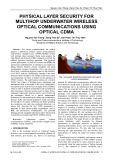


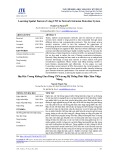
![Biến Tần FR-A700: Sổ Tay Hướng Dẫn Cơ Bản [Chi Tiết]](https://cdn.tailieu.vn/images/document/thumbnail/2019/20191130/cac1994/135x160/1741575103503.jpg)
![Xử lý số tín hiệu: Tài liệu thí nghiệm [Chuẩn SEO]](https://cdn.tailieu.vn/images/document/thumbnail/2018/20180821/danhvi27/135x160/7141534836177.jpg)

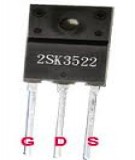
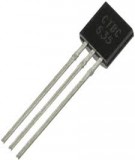
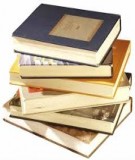

![Trắc nghiệm Mạch điện: Tổng hợp câu hỏi và bài tập [năm hiện tại]](https://cdn.tailieu.vn/images/document/thumbnail/2025/20251118/trungkiendt9/135x160/61371763448593.jpg)













